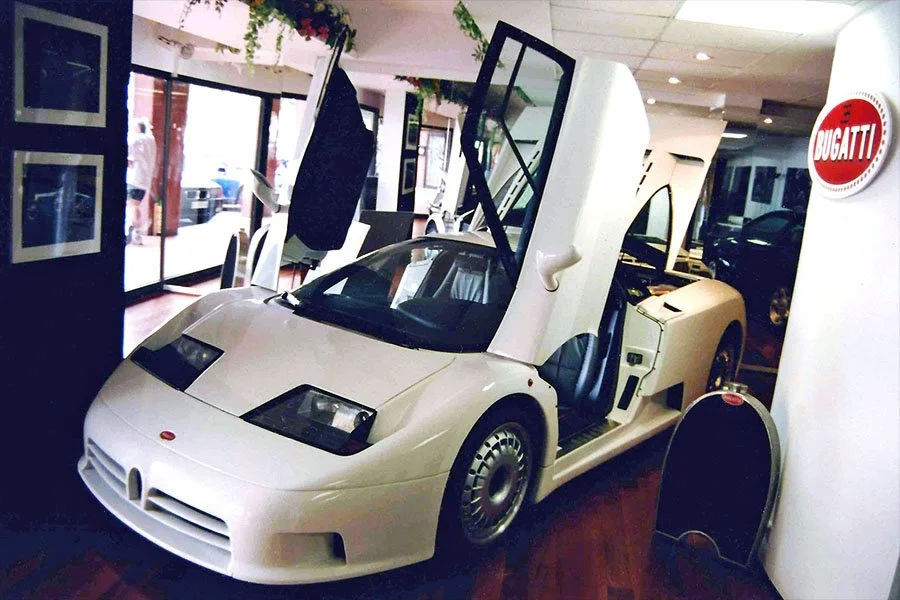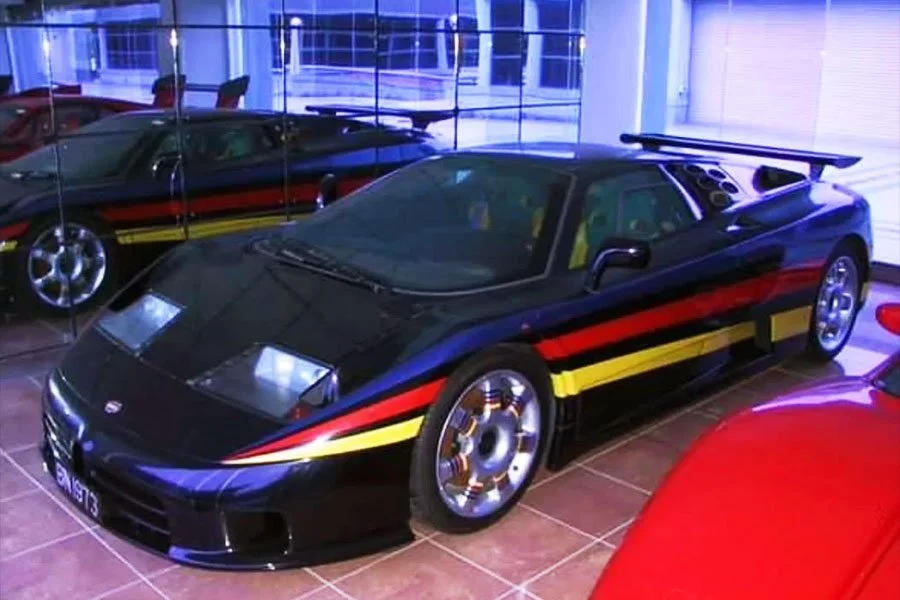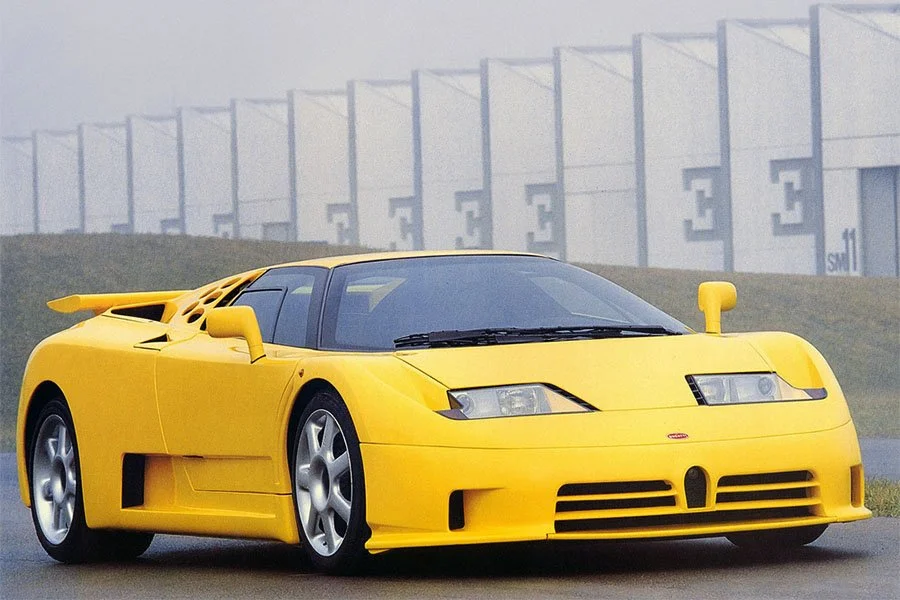Guide: Bugatti 18.3 Chiron - a Historical & Technical Appraisal
/BACKGROUND
Romano Artioli’s dream of a revived Bugatti brand ended in September 1995 when the firm closed its doors and filed for bankruptcy.
Artioli had built a state-of-the-art factory in Campogalliano, eight miles from Modena, and funded development of the EB110 supercar.
However, the Gandini-styled machine replete with bespoke quad-turbocharged V12 was a commercial flop. Launched in September 1991, its high price at a time of economic gloom resulted in little more than 100 customer sales.
Artioli sold Bugatti’s naming rights to the Volkswagen Audi Group (VAG) in May 1998. VAG Chairman, Ferdinand Piech, was instrumental in the acquisition; his dream was for Bugatti to produce the fastest and most extravagantly engineered motor cars available.
The first indication of how VAG’s new Bugattis might look came over the course of four motor shows between autumn 1998 and autumn 1999.
The first three of these fully functional concepts were styled by Ital Design.
Earliest to appear was the EB 118, a Coupe based on the old EB 112.
The EB 112 was conceived as Artioli’s four-door fastback limousine. Originally unveiled at the Geneva Motor Show in 1993, it was almost production ready by the time the firm went out of business.
To revive the EB 112, VAG commissioned Ital Design to update the styling and transform it into a two-door Coupe.
Presented in this latest configuration at the Paris Motor Show in September 1998, the EB 118 was notably fitted with VAG’s radical new W18 engine.
A four-door version, known as the EB 218, was subsequently displayed at the Geneva Motor Show in March 1999.
VAG and Ital Design’s first clean sheet design followed at the Frankfurt Motor Show in September 1999.
The new 18.3 Chiron was a two-seat mid-engined supercar and gave a more accurate indication of where the brand was headed.
It was named after the Monegasque, Louis Chiron, who achieved more podium finishes for Automobiles Ettore Bugatti than any other racing driver.
ENGINE
Like the EB 118, Bugatti’s Chiron concept was powered by the Volkswagen-derived W18 engine that comprised three six cylinder banks with a 60° offset between them. A curiously lopsided looking power unit, it utilised two cylinder banks in a conventional V with the third lying horizontally.
Each bank featured dual overhead camshafts with four valves per cylinder and direct fuel-injection from a single metering unit.
The heads, combustion chamber valves, injectors and pistons were all sourced from series production Volkswagen engines.
Overall displacement was 6255cc thanks to a bore and stroke of 76.5mm and 75.6mm respectively.
Compression was 11.5:1 and, all told, the 315kg engine produced 555bhp at 6800rpm.
Its torque rating was a mammoth 479lb-ft at 4000rpm.
CHASSIS
Bugatti based the Chiron prototype around a modified tubular steel chassis and four-wheel drive system from a Lamborghini Diablo VT.
VAG had purchased Lamborghini from then owners, MegaTech, in September 1998.
Suspension was via unequal length wishbones, electronically adjustable shocks and anti-roll bars.
Anti-dive / anti-squat geometry was installed at the front with cross-drilled and ventilated brake discs all round.
BODYWORK
Like the EB 118 and EB 218, Giorgetto Giugiaro’s Ital Design agency was commissioned to create a body and interior for the Chiron.
The Turin styling house had quite a history with the revived Bugatti marque.
During the EB110’s gestation, Romano Artioli had asked Giugiaro’s firm to devise a proposal (the ID 90). The four-door EB 112 was also the work of Ital Design but never made it to production as the firm were declared bankrupt as it neared completion.
The Chiron was a collaboration between Giogietto’s son, Fabrizio, and Hartmut Warkuss at Volkswagen’s in-house design studio. Although its front and rear overhangs were a little heavy handed, the overall appearance was quite pleasing.
Bugatti adopted several of the Chiron’s best features for the subsequent Veyron. They included its reclined horseshoe grille, triple Xenon headlights and distinctive V-banked nose.
Also carried over was the exposed intake plenum and a central roof / tail seam inspired by the Type 57 S/SC Aerolithe concept and Atlantic production car.
Another nod to Bugatti’s past were eight-spoke wheels in the spirit of the Type 35B.
At the rear, a diffuser was integrated with the back bumper and a discrete retractable spoiler was employed.
INTERIOR
The cockpit was a mix of tan and dark blue leather upholstery with brushed aluminium inserts.
Directly behind the four-spoke steering wheel was an instrument binnacle with primary gauges for engine speed and road speed. Most of the supplementary instrumentation was located on the centre console that adjoined the transmission tunnel.
RECEPTION
Reaction to the 18.3 Chiron was extremely favourable.
However, just a few weeks after the Chrion’s debut, Bugatti unveiled the 18.4 Veyron at the Tokyo Motor Show in October 1999.
The Veyron was the car that ultimately set the blueprint for the subsequent production model.
Styled entirely in-house, the Veyron’s arrival marked the end of an almost decade long tie-up between Ital Design and Bugatti.
Text copyright: Supercar Nostalgia
Photo copyright: Bugatti - https://www.bugatti.com
































